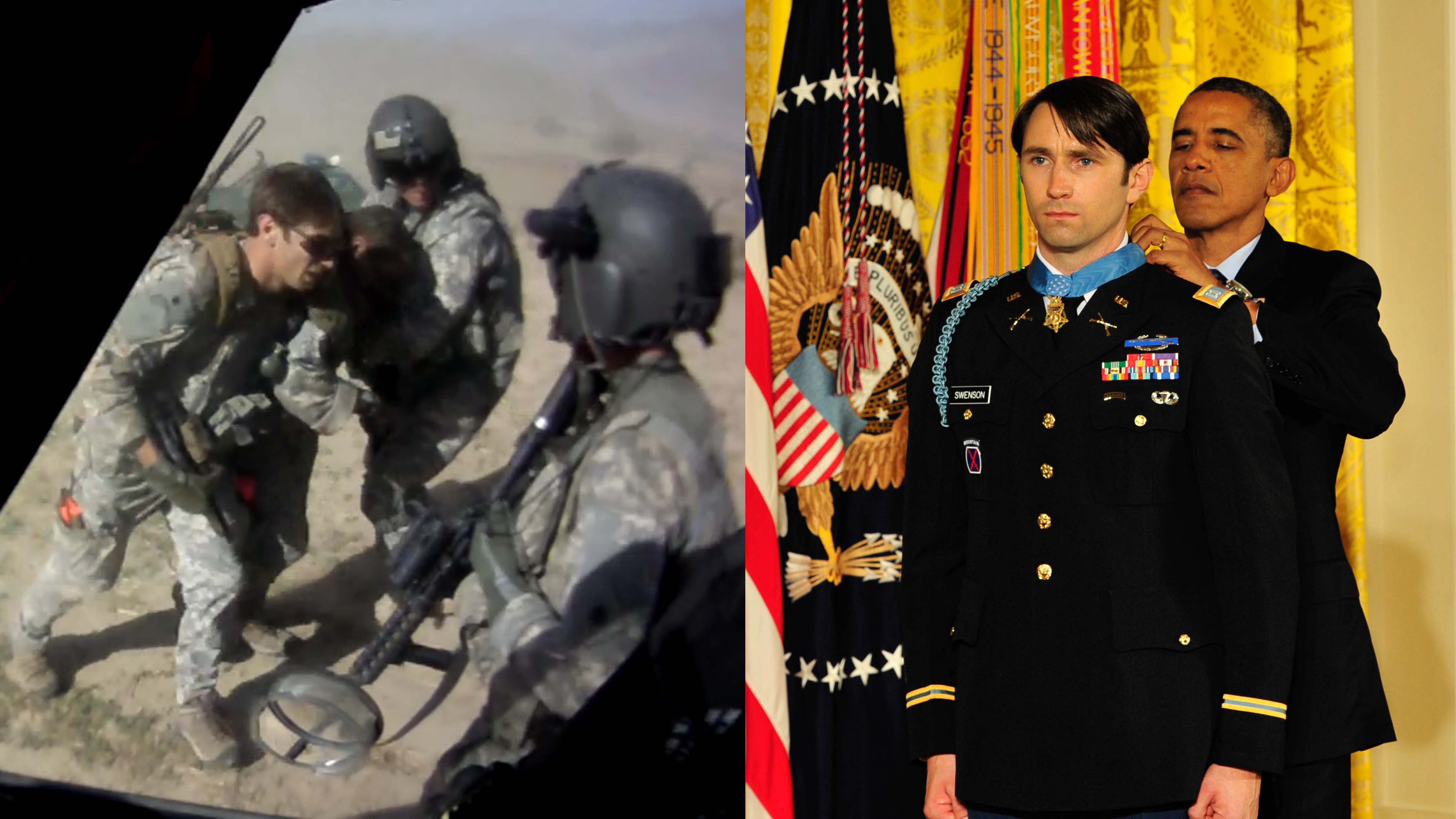
The Afghan and U.S. task force approaching Afghanistan’s Ganjgal valley on Sept. 8, 2009, expected to face enemy resistance, but when it came, it wasn’t just small arms fire — it was a full-on ambush by 60 insurgents with machine guns, RPGs, mortars, and other weapon systems, opening up from 100 meters.
Insurgents had snuck into Ganjgal village ahead of the patrol’s arrival. Task Force Chosin was comprised of soldiers assigned to the 10th Mountain Division, along with Marines with an Embedded Training Team, and joined by Afghan forces. As the lead group of Americans and Afghans approached the village, they were ambushed and pinned down. Three ETT Marines and a Navy corpsman were killed: 1st Lt. Michael Johnson, Staff Sgt. Aaron Kenefick, Gunnery Sgt. Edwin W. Johnson, and Hospital Corpsman 3rd Class James Layton.
Then-Capt. William Swenson was an advisor for Task Force Chosin and saw insurgents trying to flank his team’s position.
“The day went South. Things went bad, but we all came together,” said Swenson during an Americans in Wartime Experience interview in December 2021.
Swenson returned fire to try to mitigate the danger posed by the accurate PKM machine gun and AK-47 fire pinning down the lead element. He then started calling in artillery to try and suppress the advancing enemy forces. Still, due to the advancing insurgents’ speed, the artillery fire failed to slow them down.
Subscribe to Task & Purpose today. Get the latest military news and culture in your inbox daily.
Over the sound of RPGs and mortar rounds impacting, Swenson and his team heard the calls of the wounded and knew they needed to act quickly. Swenson started coordinating helicopter evacuation for the injured, but they needed to get the wounded out of the open. During the heat of the battle, Swenson and his partner advisor, Sgt. 1st Class Kenneth Westbrook, had been separated.
During that time, Westbrook had been shot in the upper chest. Swenson maneuvered into an open space to treat and move Westbrook. While advancing with Afghan allies, two were killed and a third wounded. Swenson began treating Westbrook’s wounds. While doing so, a member of Swenson’s combat team said the Taliban was demanding their surrender.
Swenson paused, put down his radio, and lobbed a grenade toward the approaching enemy force — and the commander demanding the task force’s surrender. Then he went back to treating Westbrook, according to his Medal of Honor citation.

His actions helped rally the task force, and they focused their fire on the insurgents, effectively breaking their advance.
Swenson called in white phosphorous rounds to cover the evacuation of the wounded and coordinated gunruns on the enemy, which gave the task force enough time to begin their withdrawal from the area.
As they continually returned fire and broke contact, Swenson, along with his teammates, carried Westbrook and the other wounded down the steep terraces, where the closest landing zone awaited them. Once Westbrook was loaded onto the UH-60 Blackhawk helicopter, Swenson and a teammate dropped back into the kill zone in an unarmored vehicle to rescue more wounded — twice.
However, that vehicle was shot up so badly that it was rendered ineffective. Swenson and his team drove back into the kill zone with an up-armored High Mobility Multipurpose Wheeled Vehicle (HMMWV). Swenson could not stop at marked spots of the wounded but continued to coordinate artillery and combat search and rescue helicopters to help locate the fallen killed early on in the ambush.
They fought their way to the last known location of the Marines and Navy Corpsman, despite the withering assault of PKM and AK-47 fire. They found the four in a deep trench and recovered the bodies of the fallen, successfully returning to the base of the valley to evacuate them.

In total, Swenson helped save 12 Afghan allies and coordinated the main defense throughout the ambush and the following battle over the course of seven hours. The battle came at a heavy cost, leaving 15 dead — including the three Marines, the Navy Corpsman, and one ETT interpreter.
For his actions in Afghanistan, on Oct. 16, 2013, Swenson was awarded the nation’s highest decoration for valor, the Medal of Honor.
“Could I have done anything different? No. But could I always hope the outcome could have been different? Yeah,” Swenson said during a September 2013, Army interview. Hopefully, nobody else ever has to feel that outcome, and that’s important from that day, what we learned, and how we move forward.”
